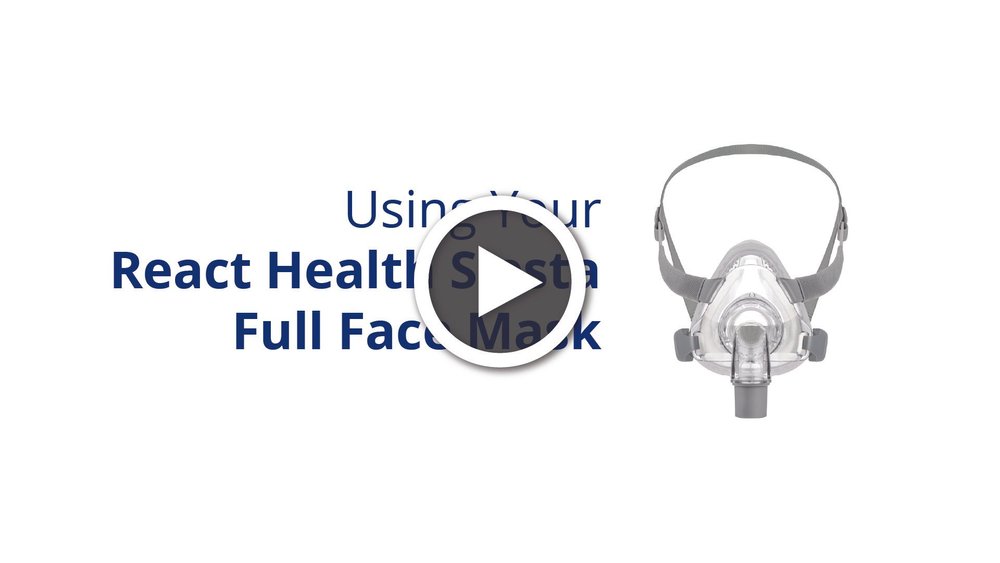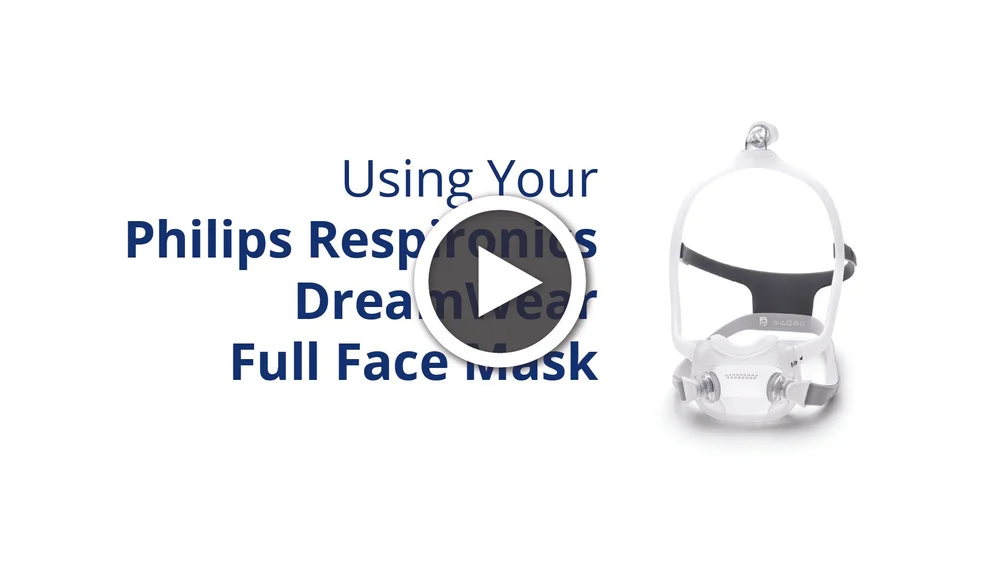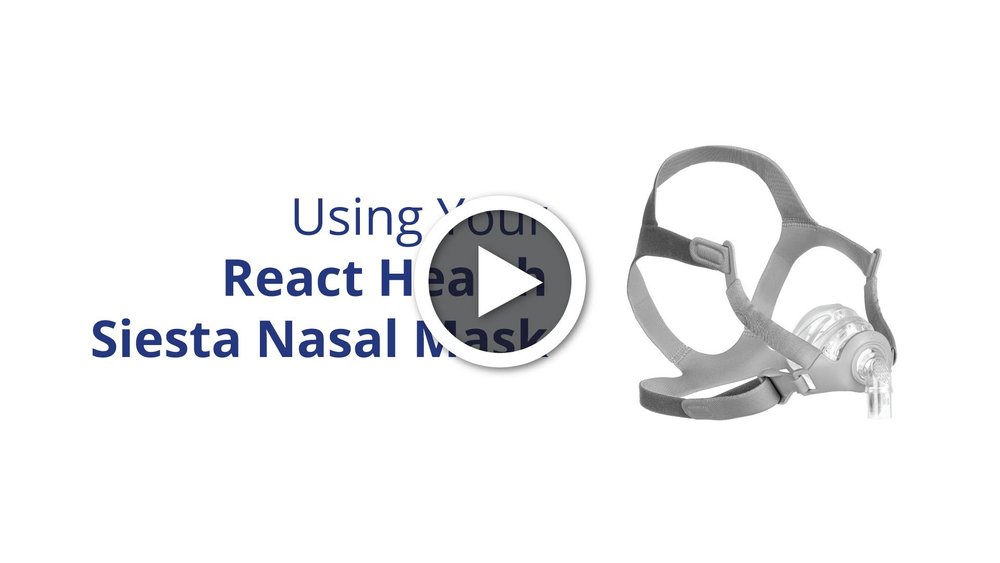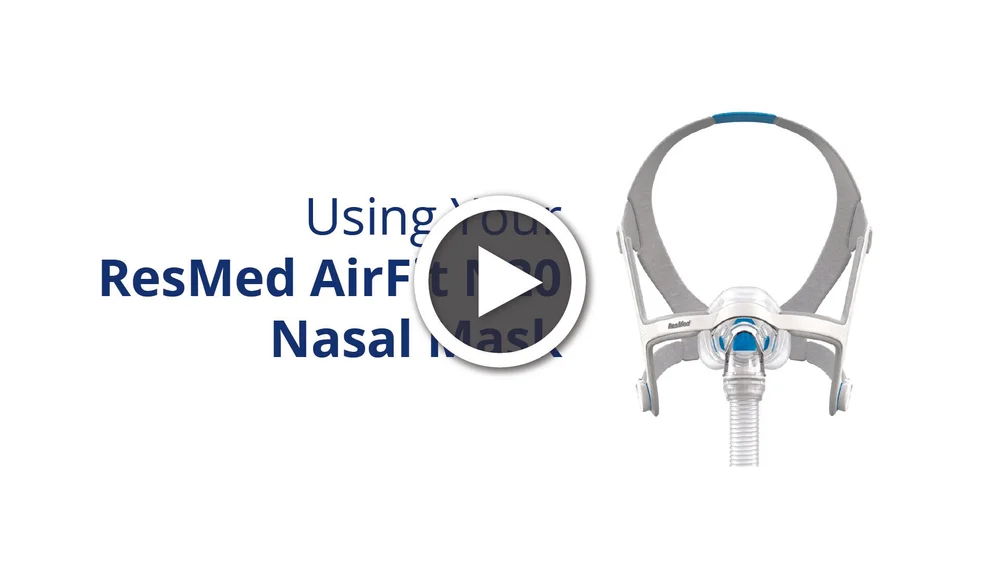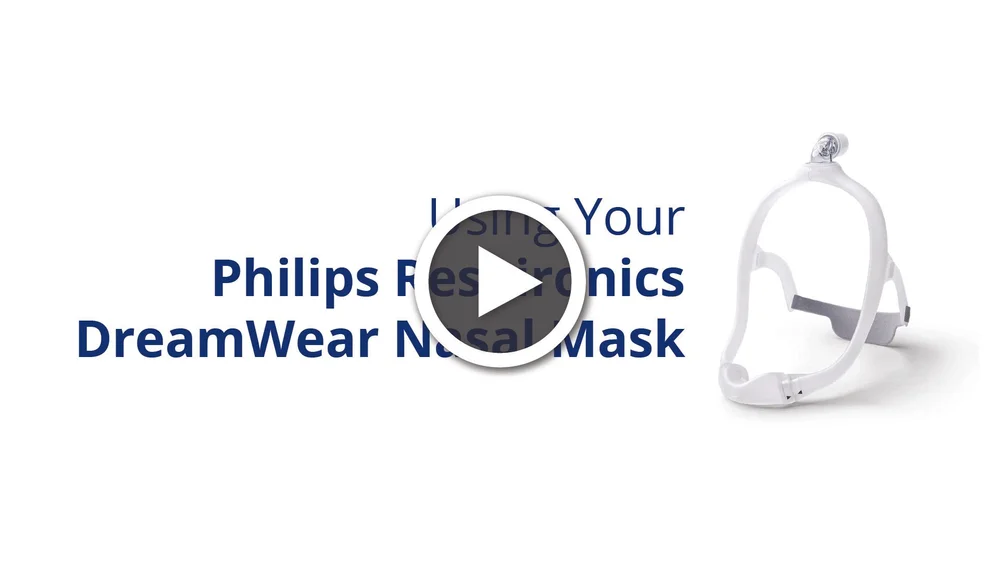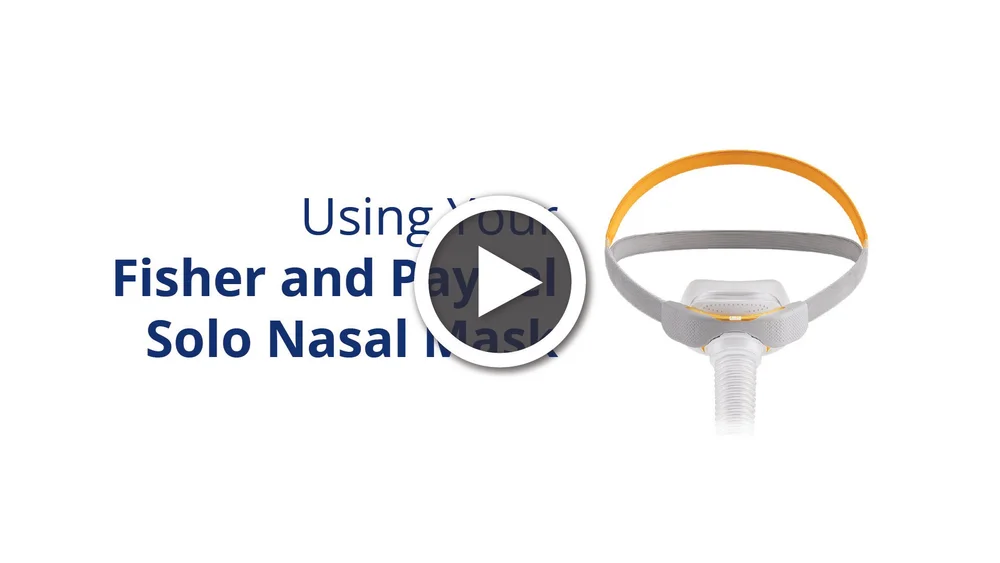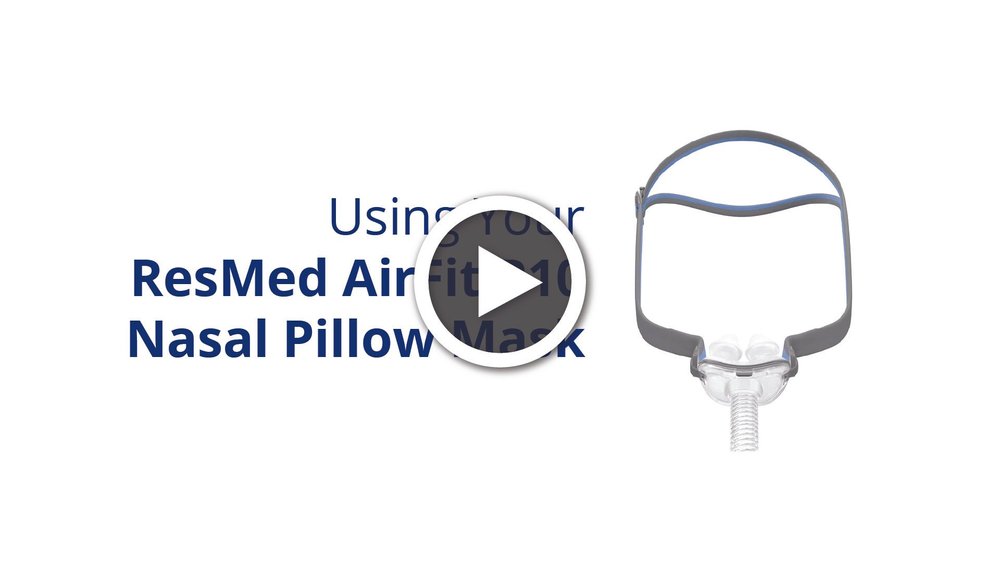
CPAP Mask Help
Your CPAP mask is a crucial part of your therapy, and we understand that getting used to it can sometimes present challenges. Whether you’re adjusting to your new mask or encountering issues, we’re here to support you every step of the way.
Need CPAP Device Help? Click Here
For CPAP Supplies, Click Here
The Different Types of CPAP Masks
Full Face Masks Full face masks cover both the nose and mouth, delivering air pressure to both airways simultaneously. This type is ideal for those who breathe through their mouth while sleeping. Full face masks provide more stability and reduce the risk of dry mouth, ensuring effective therapy for higher pressure settings.
Best for: Mouth breathers, people with nasal congestion, and those who sleep on their back.
Nasal Masks Nasal CPAP masks cover only the nose, offering a secure fit while providing effective air pressure for sleep therapy. They are generally lightweight and less obtrusive, making them a great option for people who move around during sleep. Nasal masks offer a balance of comfort and stability, reducing the likelihood of air leakage.
Best for: People who breathe through their nose and tend to sleep on their back or side.
Nasal Pillow Masks Nasal pillow masks feature small, cushioned inserts that rest just at the nostrils, providing direct airflow. These masks are extremely lightweight and have minimal facial coverage, making them ideal for users who feel claustrophobic or want to wear glasses while using CPAP therapy. The open design also reduces mask contact on the face, preventing skin irritation.
Best for: Active sleepers, side sleepers, and those who prefer less contact with their face.
CPAP Mask Instructional Videos
Detailed instructions on how to use your particular CPAP Mask.
Full Face Masks
React Health Siesta Full Face Mask
ResMed AirFit F20 Full Face Mask
Philips Respironics DreamWear Full Face Mask
Fisher and Paykel Evora Full Face Mask
Nasal Masks
React Health Siesta Nasal Mask
ResMed AirFit N20 Nasal Mask
Philips Respironics DreamWear Nasal Mask
Fisher and Paykel Solo Nasal Mask
Nasal Pillow Masks
React Health Rio II Nasal Pillow Mask
ResMed AirFit P10 Nasal Pillow Mask
Philips Respironics DreamWear Nasal Pillow Mask
Fisher and Paykel Nova Micro Nasal Pillow Mask
Fisher and Paykel Solo Nasal Pillow Mask
Achieving a Good Mask Fit
Your CPAP mask is one of the most important parts of your therapy—and getting the right fit can make all the difference. Whether you’re adjusting to a new mask or running into comfort issues, we’re here to help you find a solution that works.
Adjust the straps evenly: Your mask should feel snug but not tight. Over-tightening can cause leaks and skin irritation.
Fit your mask in your sleeping position: Your face can shift slightly when lying down, so try adjusting the fit while in bed.
Use the “Mask Fit” feature (if available): Many CPAP devices include a built-in Mask Fit setting that briefly increases airflow to help you check for leaks and comfort before bedtime.
Check for air leaks: If you feel or hear air escaping, gently reposition the mask or adjust the straps. A small shift can make a big difference.
Keep your mask and skin clean: Facial oils can affect the seal. Wash your face before bed and clean your mask regularly according to the instructions.
Try it for short periods at first: If you’re struggling to adjust, wear your mask during the day while reading or watching TV to get more comfortable with it.
Mask Frequently Asked Questions
-
The best mask for you depends on your comfort preferences and the type of sleep apnea therapy you need. Options include full-face masks, nasal masks, and nasal pillows.
-
Start by wearing the mask for short periods while awake to get used to the sensation. Gradually increase the time you use the mask while sleeping.
-
Perform the Mask Fit Test: In your Patient Menu, perform the Mask Fit Test. For nasal pillows, ensure you do not feel air coming out from around your nostrils.
Check for Leaks: Nasal and full face masks should not leak air anywhere they touch the skin. Common leak sites include the bridge of the nose or along the bottom of each mask. If a leak is present, the mask may need to be tightened slightly (remember, masks are NOT designed to be worn very tightly) or perhaps the cushion is too large. This might indicate the mask is not adjusted tight enough or the cushion size is incorrect.
Check Cushion/Headgear Condition: Verify when you last received the cushion and headgear and how often they are cleaned. As the cushion ages, it may appear clean, but the natural "stickiness" diminishes, making it look shiny and less effective unless additional pressure is applied.
-
Try to pinpoint where the air is coming from.
If the air is coming from the front of the mask, this is where the exhalation port is located, and this is completely normal. The exhalation port is a safety mechanism that allows your exhaled carbon dioxide to be released from the mask.
If the air is leaking into your eyes or from the bottom of the mask,you may need to be resized or tighten the mask. Your CPAP device has a Mask Fit Test in the Patient Menu / MyOptions Menu to see if tightening or adjusting the mask resolves the issue.
If the air is leaking from your nasal or full face mask while side sleeping, this suggests that your pillow is dislodging the mask. Consider using a CPAP contour pillow, which can help minimize mask shifting while you sleep.
-
Nasal Pillows: Try a different sized pillow and rotate between the sizes if the nostrils become sore.
Pillows and Other Mask Styles: Attempt to increase humidity or utilize saline nasal gel or Aquaphor.
-
Nasal Masks: CPAP masks are actually designed to fit with minimal pressure on the face. Loosening the mask may actually improve both mask function and comfort! So, try loosening the mask a little bit at a time and then turn on the CPAP device to check that it is still maintaining a seal. If that does not help, mask liners (RemZzzs) or nasal boomerang pads will sit between your mask and skin, reducing direct skin-to-mask contact. For immediate relief, Lanolin may be applied to affected areas to reduce friction and heal damaged skin. Be sure to avoid any petroleum-based products like Vaseline as they can degrade the mask material.
Full Face Masks: Follow the steps above. If the issue is not resolved, a transition to a hybrid full face mask that covers the mouth and sits under the nose can reduce tension on the bridge of the nose.
-
Nasal Mask or Nasal Pillows: It is beneficial to breathe in and out through your nose while using CPAP, as this makes the therapy more effective. However, the airflow can be drying and lead to congestion or a runny nose. Increasing the humidity in the Patient Menu can help relieve these symptoms. If this does not help, a chin strap may be necessary.
Mouth Breathing Due to Sinus Issues: If you find it necessary to breathe through your mouth while awake due to chronic sinus issues, switching to a full face mask should be considered as a last resort.
-
Adjust Ramp Time: Adjust your ramp time in the Patient Menu to allow the airflow to gradually increase to your prescribed pressure over an extended period. For DreamStation devices, press the rectangular ramp button at the top of your machine after turning it on to initiate the ramp.
Consider Switching Masks: If using nasal pillows, consider switching to a nasal mask that covers the nose. The airflow may feel less forceful or abrasive with a nasal mask.escription
-
Adjusting Mask Pressure: CPAP masks are designed to fit with minimal pressure on the face. Loosening the mask slightly can improve both function and comfort. Try loosening the mask a little at a time and then turn on the CPAP device to check if it still maintains a seal. If this doesn’t help, utilize mask liners (such as RemZzzs) to improve the fit.
Check Cushion/Headgear Quality: Over-tightening is often due to poor cushion or headgear quality. Verify when you last received the cushion and headgear and how often they are cleaned. As the cushion ages, it may appear clean, but its natural "stickiness" diminishes, causing it to look shiny and not seal properly unless additional pressure is applied.
-
This is an indicator that the mask needs to be tightened. Tighten your mask to your comfort. If you cough, sneeze or speak with a full face mask, pulsing is normal at this time.
-
You can sleep in whichever position feels most comfortable for you. Side sleeping is achievable with all mask types, though full face masks may require a CPAP Contour Pillow (available from Sleep Data) to reduce positional leakage. Stomach sleeping is possible but might not be the most comfortable. If you prefer stomach sleeping and can tolerate breathing through your nose throughout the day, a nasal pillow mask may be the best option since it has the smallest “footprint.”
-
Facial hair generally does not affect mask seal quality, as long as it is tightened enough. Facial hair should not restrict you from having the most comfortable mask for your therapy experience.




